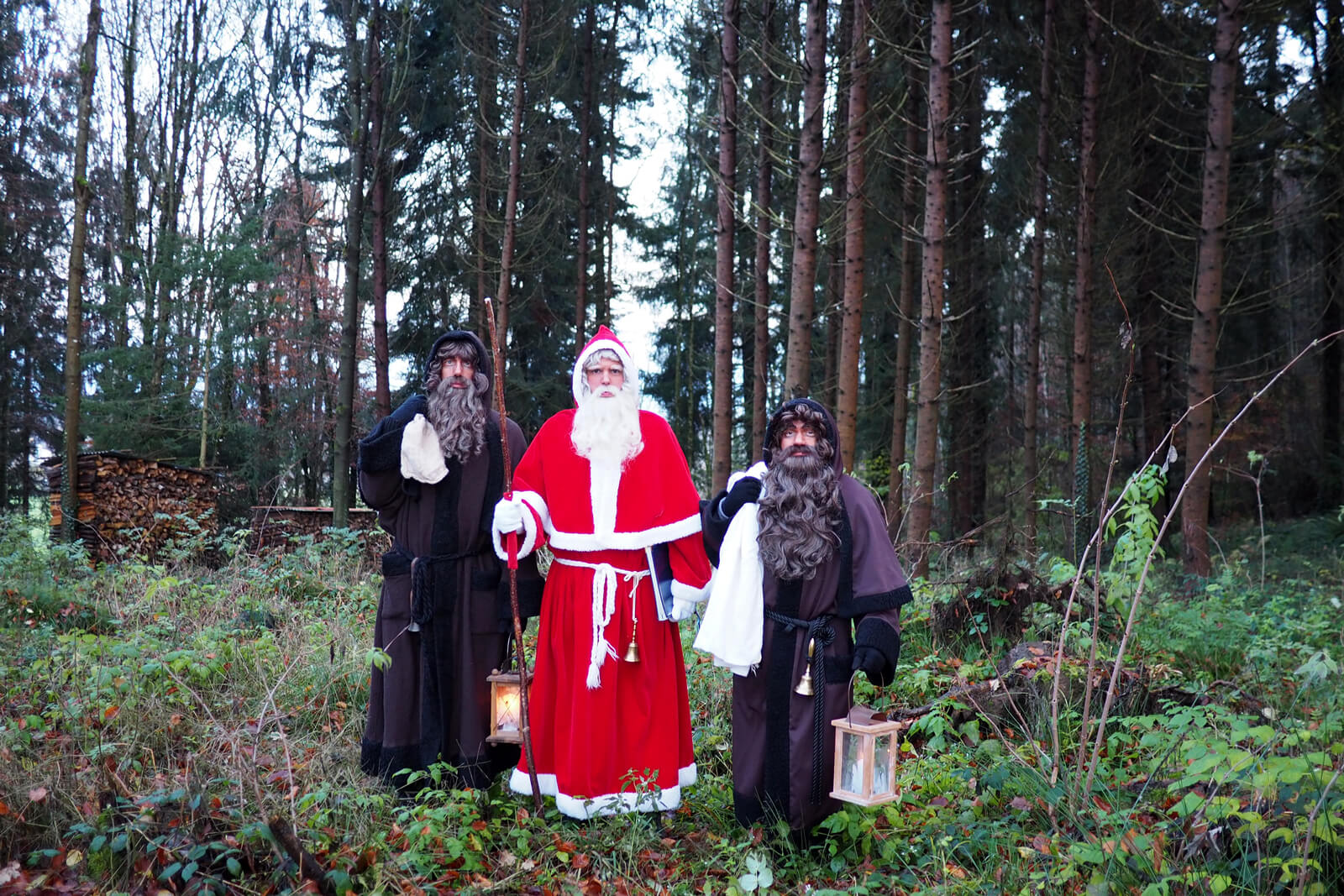
Swiss Santa is not exactly a jolly good fellow like his American counterpart. He is not mean spirited, either. But yet, his job description differs quite a bit.
Here is an overview of the Swiss Santa tradition from my own perspective. It is important to note that the details of how this tradition is carried out differs significantly within Switzerland. Each linguistic region has their own traditions, and catholic cantons vary from protestant cantons.
December 6 is Santa Day in Switzerland
Regardless of where you are located, December 6 is the traditional Santa Day in Switzerland. On this day, "Samichlaus" and his companion "Schmutzli" (as they are called in Swiss German) will emerge from their cottage in the woods to visit children at their kindergartens, classrooms and homes.
Rather than flying on a reindeer-pulled sleigh, Samichlaus and Schmutzli walk across the countryside with a donkey in tow.
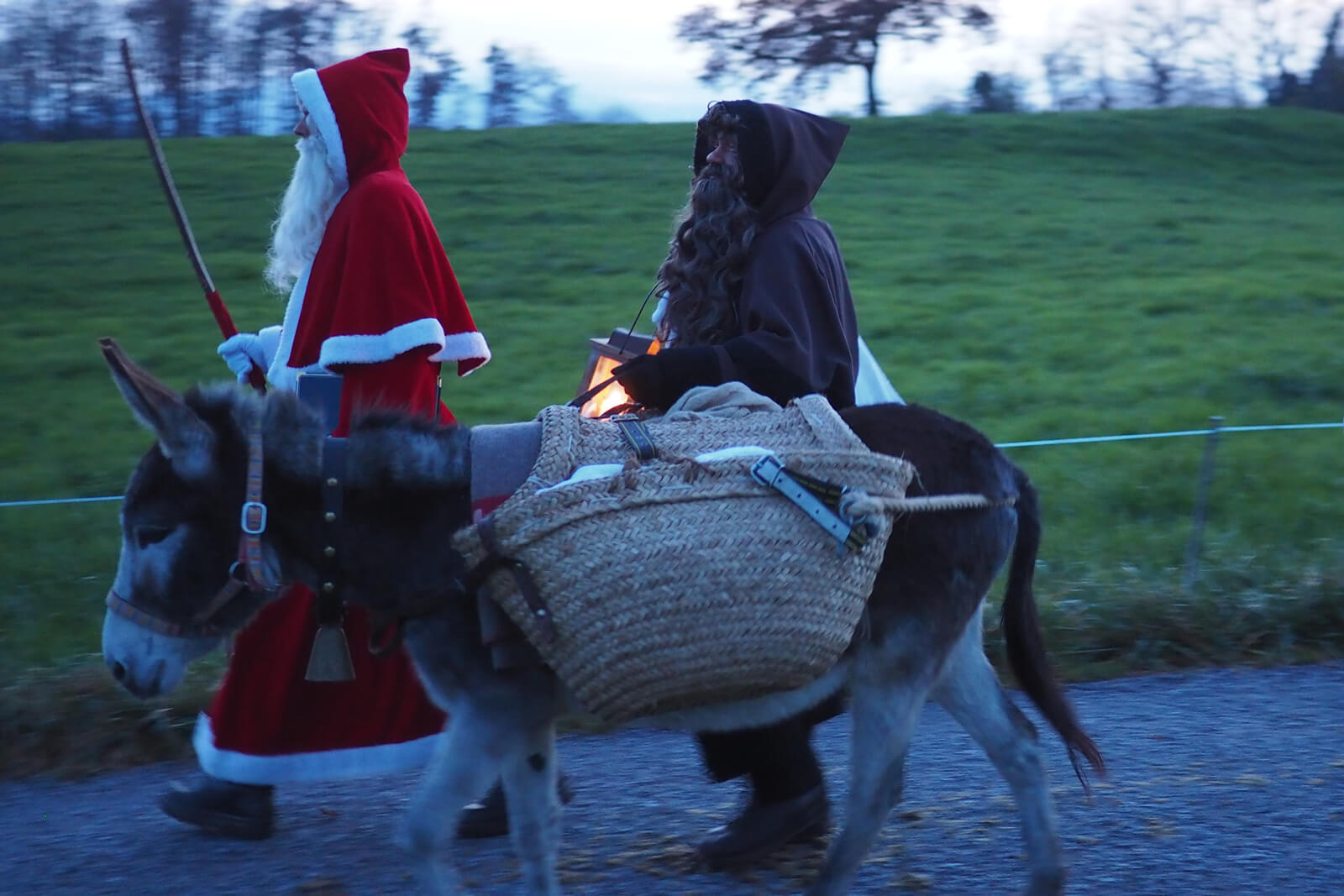
Swiss Traditions on the Eve of Saint Nicholas Day
On December 5th, the eve of Saint Nicholas Day, Switzerland comes alive with festive parades known as Klausjagen, or "Santa-chasing."
During these parades, you'll see colorful costumes and glaring candles. And your ears might end up deaf... There is usually loud and rhythmic clanging of cowbells, sounds of cracking whips, and bold trumpets blaring through the night.
The processions are a sight to behold, illuminated by torches and lanterns that resemble stained-glass windows. These parades are a prelude to the arrival of Samichlaus and his companion, Schmutzli. Swiss children eagerly wait along the streets, lanterns in hand, ready to welcome these festive icons.
Rehearsing of Santa Poems in Exchange of Goodies
Once they reach town, Samichlaus and Schmutzli have their work cut out for them. One by one, they will visit families at their home. Since Samichlaus has a special Santa bell attached to his waist, the trot can be heard loud and clear from afar.

Some families take the time to decorate their living room with candles and Christmas lights. Others might host Samichlaus in their yard where they might have a bonfire going. And yet other homes show no signs of the festive season whatsoever.
Once seated, Samichlaus with his deep voice will narrate a heartwarming story. Next up, children are expected to rehearse a poem and make a promise to better themselves for the upcoming year. To thank them for their poems, Schmutzli will hand them a gingerbread cookie from his sack.
And finally, the emptying of the big bag. Whether they have been naughty or nice, children are left with a pile of walnuts, peanuts, chocolates, tangerines, and gingerbreads...
As you can tell, a Santa visit is not a bad deal for those kids who have studied up. Beyond the home visits, Swiss children participate in a range of festive activities during the Samichlaus and Schmutzli celebrations.
Nostalgic Swiss Santa Memories From My Childhood:
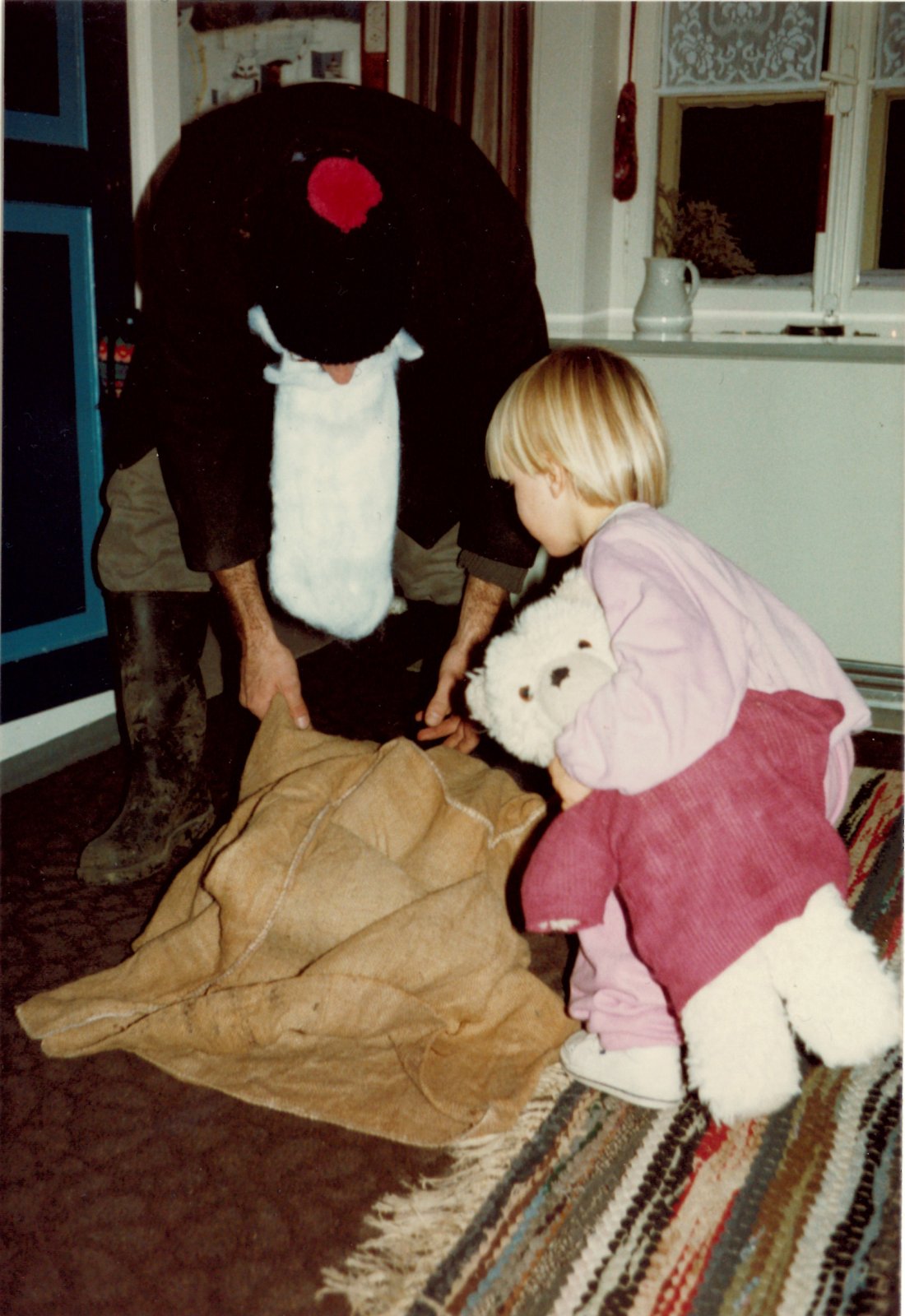
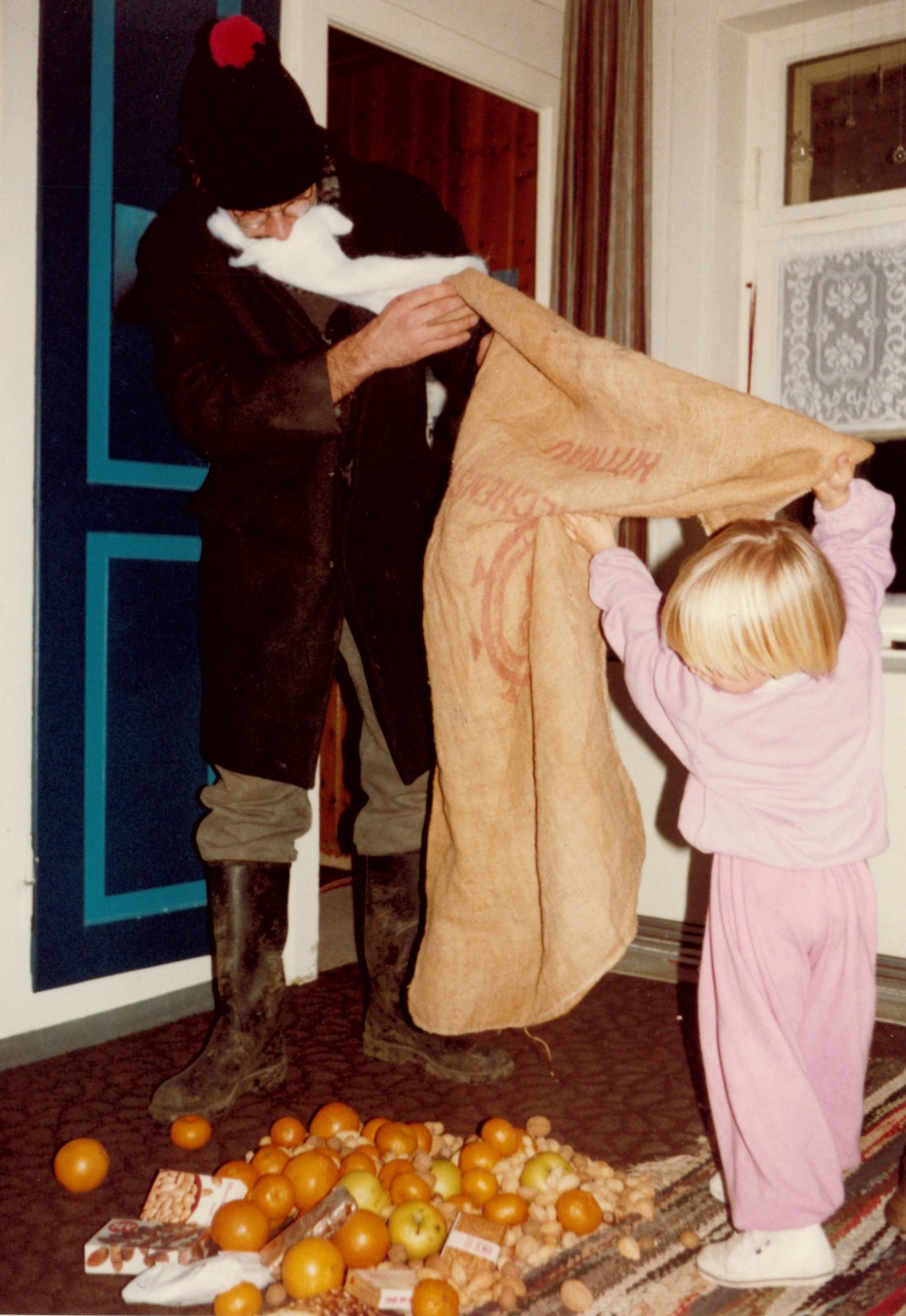
Did you know that in decades past, children would be trapped in Schmutzli's bag and carried out the door? Who knows, maybe the fear of being kidnapped is the real reason why the Swiss are generally well behaved...
Apart from nuts and sweets, Swiss Santa is not in charge of dropping off presents for the children. (Climbing down a chimney on Christmas Morning is only in the job description of his American counterpart.) In Switzerland, delivering Christmas presents has been outsourced to the Christkind...
About the Annual Santa Parade in Zurich
The annual Santa Parade in Zurich is a great way for newcomers to get acquainted with the Swiss Santa tradition. We've attended this event at Bahnhofstrasse in Zurich several times.
As dozens of Samichlaus journey through the city, they generously hand out gingerbread and candies, much to the delight of those waiting out in the cold.
When children approach a Samichlaus, they will recite a special rhyme, known locally as a Sprüchli. A few weeks prior, kids will rehearse these Santa poems in the classroom or with their parents.
Samichlaus engages with the youngsters, inquiring about their behavior throughout the year. Encouraging them to be better, he rewards their effort with traditional treats like gingerbread, chocolates, mandarins, and peanuts.
I've watched kids' eyes light up year after year as dozens of Samichlaus figures march down the street. This Samichlaus was checking on a kid to see how the rehearsing is going, although there were several days left before the Samichlaus Day:
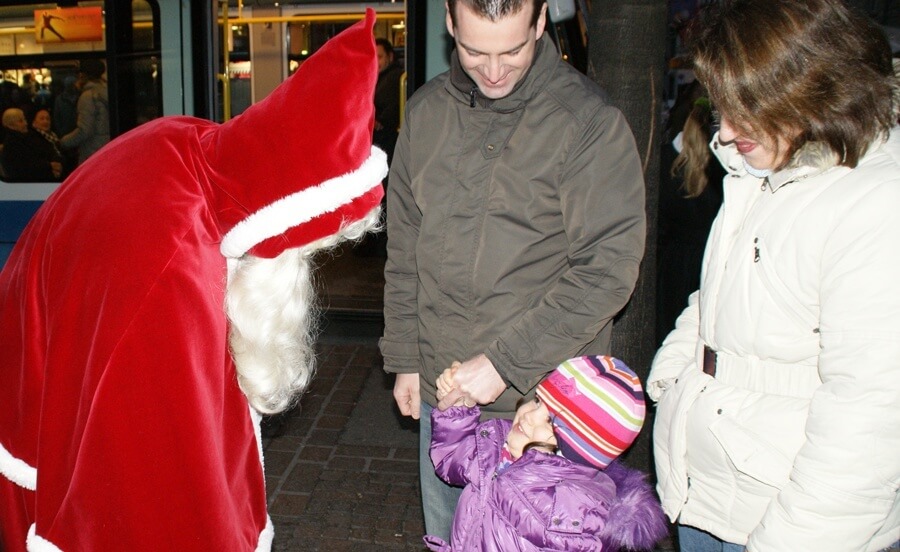
Here is a traditional Samichlaus/Schmutzli combo on Bahnhofstrasse, or as I like to call them: Good Cop and Bad Cop!
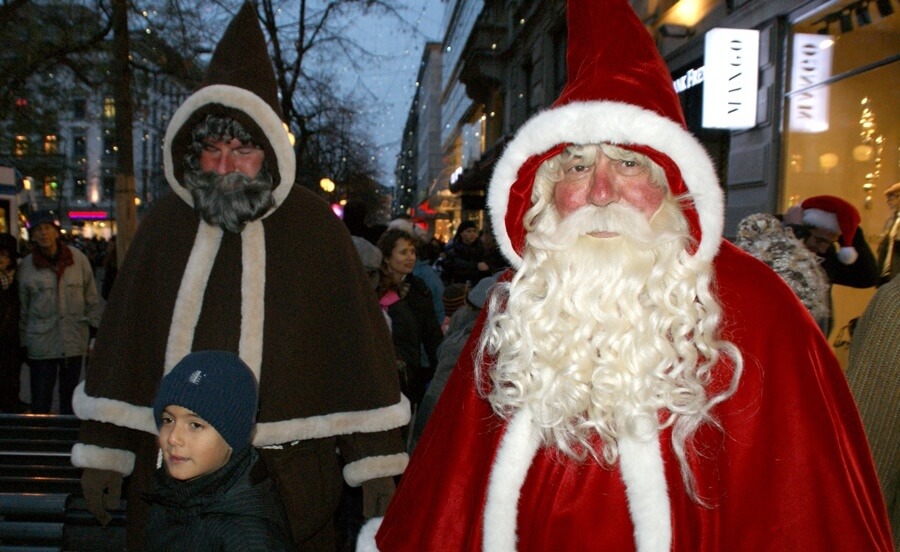
This Samichlaus found a liking in Mamiko's American attire, but I do not exactly understand the significance of Schmutzli's geeky pair of Harry Potter glasses… I guess this is what they call "pop culture"!
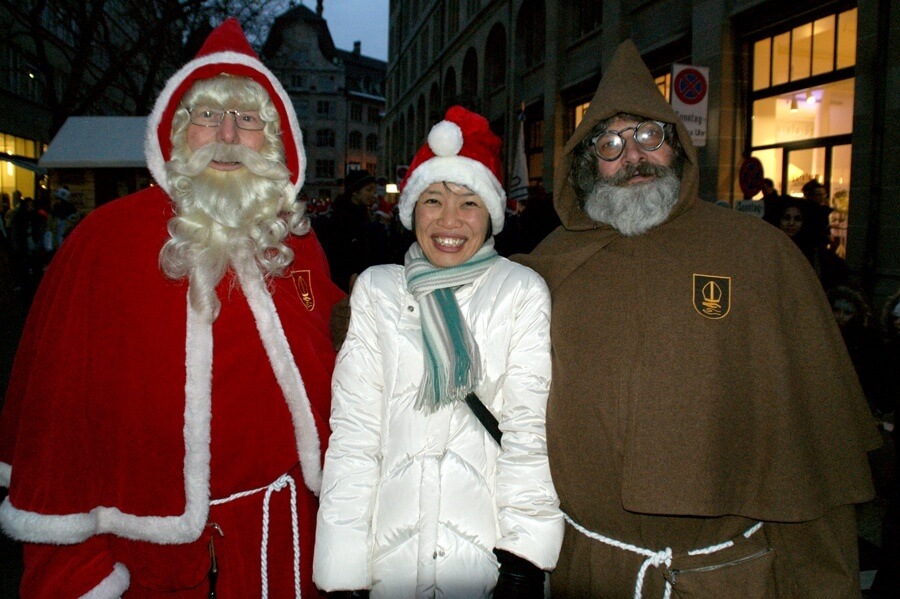
These little Schmutzli tots were too adorable to miss in the parade:
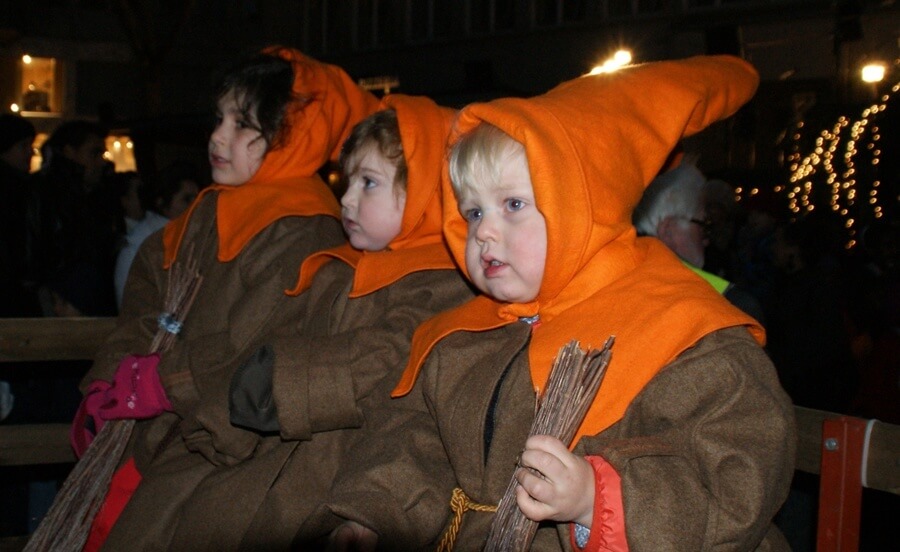
A group of American Santas drove their Harleys down from the North Pole. And this despite the high gas prices...
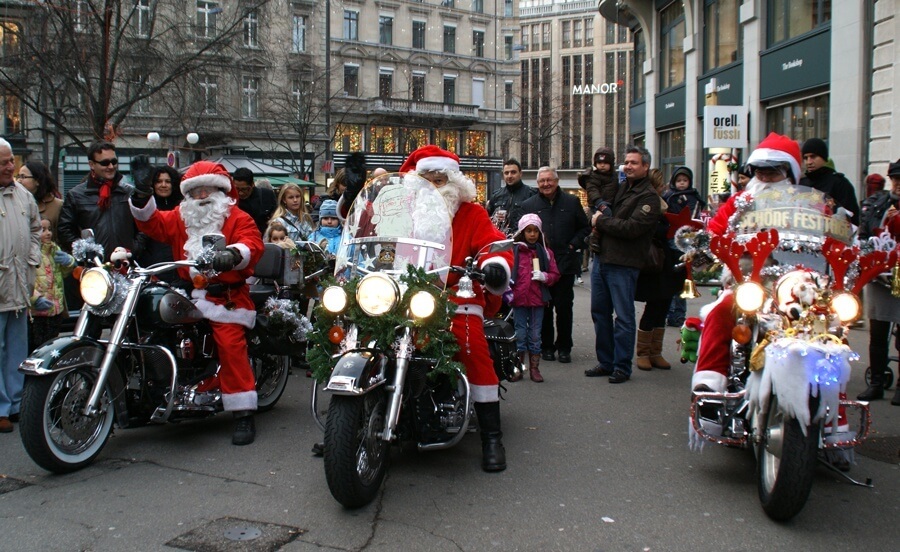
In Zurich and surrounding areas such as Wetzikon, children have a unique opportunity to visit Samichlaus at his hut nestled in the forest before Saint Nicholas Day. For an even more enchanting experience, Zurich features a magical streetcar where Samichlaus himself steers the tram, greeting children with waves and festive cheer. The street car is aptly named Märlitram, or story-telling tram.
The Role of Swiss Santa in Christmas Celebrations
In Switzerland, the festive season shines with the arrival of Samichlaus, a figure inspired by St. Nicholas. Unlike the jolly Santa Claus we often see, Swiss Santa has a more serious demeanor. He represents the wisdom of a grandparent and the guidance of a moral teacher.
A Visit with Tradition and Purpose
Samichlaus doesn’t make his appearance on Christmas Eve; instead, he arrives on December 6th for St. Nicholas Day. Dressed in bishop-like robes, a tall hat, and carrying a golden staff, he stands out as a figure of goodwill and moral reflection, rather than one focused on material gifts.
Encouraging Kindness and Good Behavior
The main goal of Swiss Santa isn’t to deliver extravagant presents, either. (Although more and more kids receive wrapped gifts as well.) Instead, he aims to promote kindness and self-improvement among children.
Santa's sack is filled with simple treats like nuts, mandarin oranges, gingerbread, and chocolates, rewarding kids for their good behavior throughout the year.
The Goldene Buch Tradition
One touching part of his visit is the Goldene Buch, or golden book, that he carries. This book contains notes from parents or teachers about each child's achievements and areas for growth. Samichlaus reads these notes during his visits, offering encouragement and gently guiding children toward becoming better individuals.
Simplicity in a Material World
Personally, I really treasure this age-old tradition in these times when the holiday season often focuses on material gifts. A couple of weeks before the holidays, the celebrations surrounding Samichlaus allow the Swiss to stop and reflect.
Hence, the traditions of Samichlaus and Schmutzli are a big part of Swiss culture. These two forest men bring together festive joy, community spirit, and customs that celebrate the values of Saint Nicholas.
What's the Role of Schmutzli In This Tradition?
Think of Schmutzli as the side-kick of Samichlaus. He is a striking figure in Swiss Christmas folklore, dressed in a long, dark robe and sporting shaggy hair.
I have some insider knowledge about the role of Schmutzli, since I've been stepping in his role for nearly a decade. Schmutzli stands in sharp contrast to the festive spirit of the season. His name, Schmutzli, comes from the Swiss German word for "dirty," which fits his often unkempt look.
In some cases, he still carries a broom or a whip made of sticks. For sure, Schmutzli is in charge of logistics by carrying a large, ominous sack full of goodies...
Traditionally, Schmutzli serves as the stern counterpart to the kind-hearted Samichlaus. In old tales, he was known for reprimanding naughty children, a role emphasized by his intimidating tools. Instead of the usual jolly Santa and his sleigh, Schmutzli and Samichlaus arrive on a humble donkey from their forest home.
Today, Schmutzli's role has softened quite a bit. Rather than punishing children, he now quietly assists Samichlaus in handing out sweets.
Sometimes, he even joins in lighthearted games like football with the kids, adding a fun twist to his otherwise mysterious character. Despite these changes, Schmutzli still carries a hint of the old traditions, bringing an air of intrigue to Swiss Christmas celebrations.

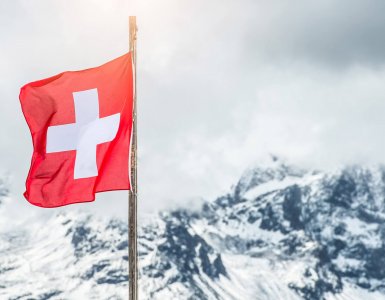
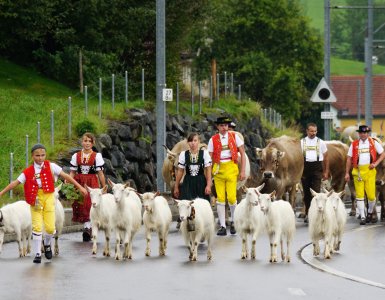
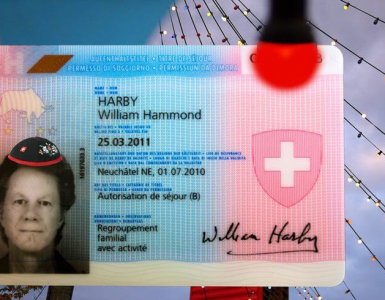

ha! two days ago i tried to ‘explain’ my flatmates the story of swiss santa and schmutzli…failed miserably! at least they managed to say ‘samichlaus’!
omg i am SO JEALOUS of mamiko!!!!! i LOVE samichlaus and schmutzli’s – it would make my life to my picture with them!
You should know how it is done in the Netherlands ;). The whole idea around “samichlaus” is rather different.
First of all he is known as “Sinterklaas” arriving in mid November by steam boat from Spain. His helpers are black (because of climbing down chimnees) and are called “Zwarte Piet”. They are so to say his assistance and make jokes and hand out candies. Sinterklaas rides a white horse.
Sinterklaas celebrates his birthday on the 5th of December and brings kids presents. Up to the 5th of December kids are allowayed to put their shoes at the chimnee so Sinterklaas can give ‘good’ kids some small sweets.
Nowadays Sinterklaas is as populair (maybe even more) as Christmas.
[…] going to the Samichlaus umzug or the Samichlaus Parade. To read more about Santa in Switzerland go here. Today we were greeted by Schmutzli which is a Stanta’s helper of sorts. Schmutzli gave me a […]
I just like saying Schmutzli.
Back in England, the kid goes to see Father Christmas in his grotto and only has to giggle a bit before being shoved out with an enormous toy. Here, the child gets told off for not going to bed when she’s told, threatened with being taken away in a sack, and then given a peanut in a shell she can’t even open… seems to me that Swiss parents just outsource their discipline – and I thoroughly approve :-)
please portrait as well the more traditional st.nikolaus – based on the holy figure. in the towns with catholic background, you can find this kind of samichlaus. especially in wil, when all st.nikolaus come out of church on Saturday 1500 closest to 6th December.
[…] Samichlaus, Swiss Santa, lives in a forest with his helper Schmutzli. They leave the forest with a donkey carrying bags […]
The first time I heard about Schmutzli was when I watched American Dad and had to ask my Swiss boyfriend why he kidnapped kids. To some extent, it makes sense.
I wasn’t aware of that episode – will have to look it up!
I don’t think that the job of leaving presents under the tree on christmas has been “outsourced” so to speak. It was never Santas job to begin with. 6th of december is the day of Saint Nicholas and it’s a seperate occasion from Christmas. It’s more like americans made 2 holidays into 1.
[…] Source:newlyswissed […]
Aww, fond memories of my childhood. I only had a visit once though. As a grown-up I found out you have to pay for the visit. But then I was baffled that he brought the present I really, really wanted. Later I knew why. Hahaha!
Thanks for sharing this lovely memory! Sami Niggi Näggi, hinderem Ofe steggi… ^Dimitri
I miss Christmas in Switzerland. There’s nothing like it.
[…] tall parents with kids on their shoulders, I did not miss the historical moment: Samichlaus, the Swiss Santa, was there in a red hood getting off the carriage, followed by Schmutzli in a brown […]
[…] in Switzerland, pretty much your ideal Christmas landscape, and that the holiday starts early here. Samichlaus and Schmutzli make their appearances on the 6th, bearing sweats, oranges, and peanuts. My family also celebrates […]
[…] Source:newlyswissed […]
[…] children receive oranges, apples, and nuts. Santa Claus is called Samichlaus in Switzerland, and he does not ride in a sleigh with reindeer pulling it, he rides on a donkey! On Dec. 6th, naughty children are supposedly carried away in Samichlaus’s big sack and told to […]